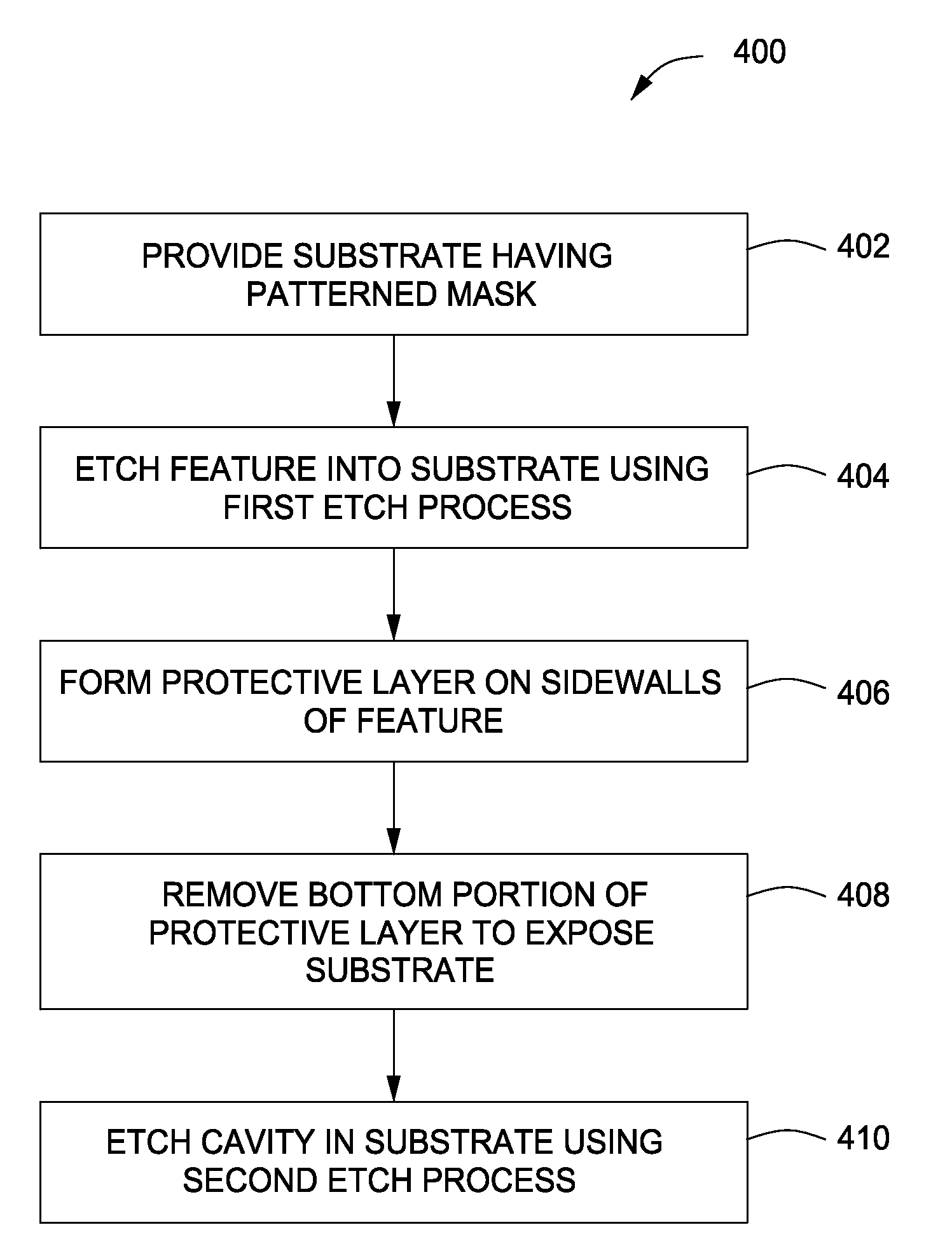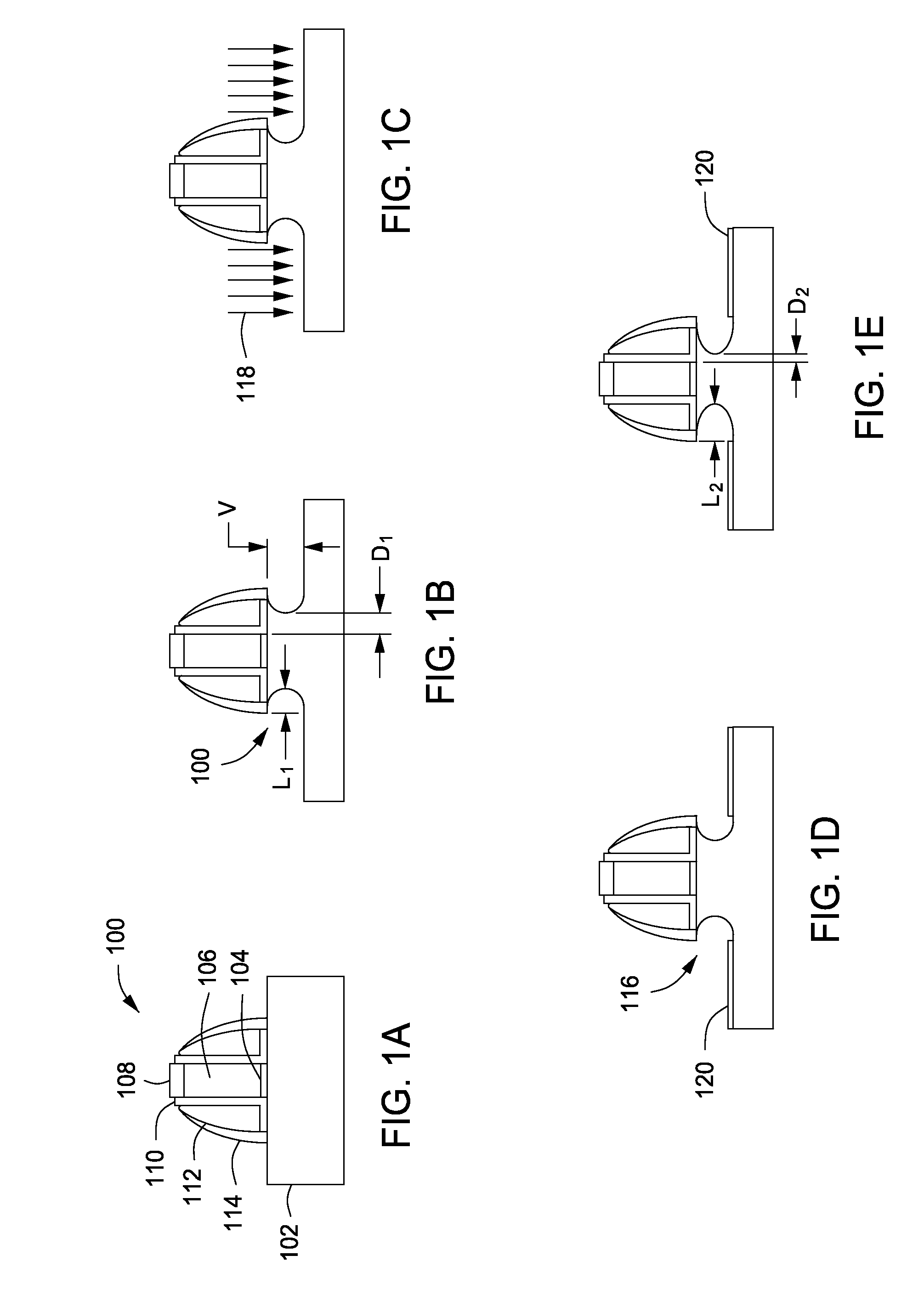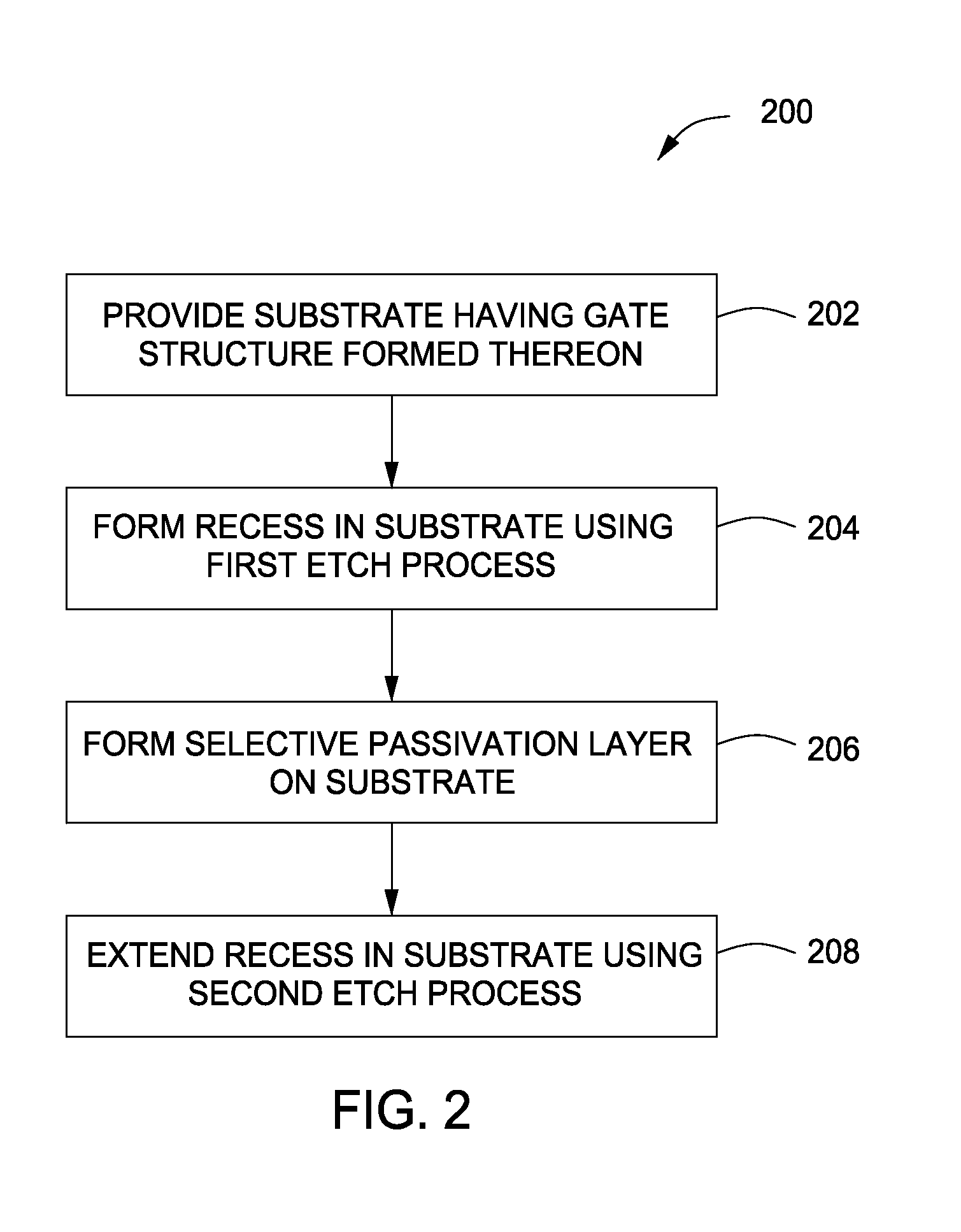Method for recess etching
a recess etching and recess technology, applied in the field of recess etching, can solve the problems of reducing the ratio of vertical to lateral etch distance, requiring greater vertical etch to lateral etch ratio, tighter constraints placed on the etch process used to form these structures, etc., to achieve the effect of improving the requirement of lateral to vertical etch ratio
- Summary
- Abstract
- Description
- Claims
- Application Information
AI Technical Summary
Benefits of technology
Problems solved by technology
Method used
Image
Examples
Embodiment Construction
[0018]FIGS. 1A-E depict stages of fabrication of an illustrative gate structure in accordance with some embodiments of the present invention. FIG. 2 depicts one illustrative method for recess etching in accordance with some embodiments of the present invention and is described below with reference to FIGS. 1A-E. Suitable reactors that may be adapted for use with the teachings disclosed herein include, for example, the Decoupled Plasma Source (DPS®) ADVANTEDGE™ reactor, or the DPS® I or DPS® II etch reactor, all of which are available from Applied Materials, Inc. of Santa Clara, Calif. The DPS® ADVANTEDGE™, DPS® I or DPS® II reactors may also be used as processing modules of a CENTURA® integrated semiconductor wafer processing system, also available from Applied Materials, Inc. An illustrative embodiment of a suitable etch reactor is described below with respect to FIG. 5.
[0019]The method 200 begins at 202, where in one exemplary embodiment of the present invention, a substrate 102 h...
PUM
 Login to View More
Login to View More Abstract
Description
Claims
Application Information
 Login to View More
Login to View More - R&D
- Intellectual Property
- Life Sciences
- Materials
- Tech Scout
- Unparalleled Data Quality
- Higher Quality Content
- 60% Fewer Hallucinations
Browse by: Latest US Patents, China's latest patents, Technical Efficacy Thesaurus, Application Domain, Technology Topic, Popular Technical Reports.
© 2025 PatSnap. All rights reserved.Legal|Privacy policy|Modern Slavery Act Transparency Statement|Sitemap|About US| Contact US: help@patsnap.com



